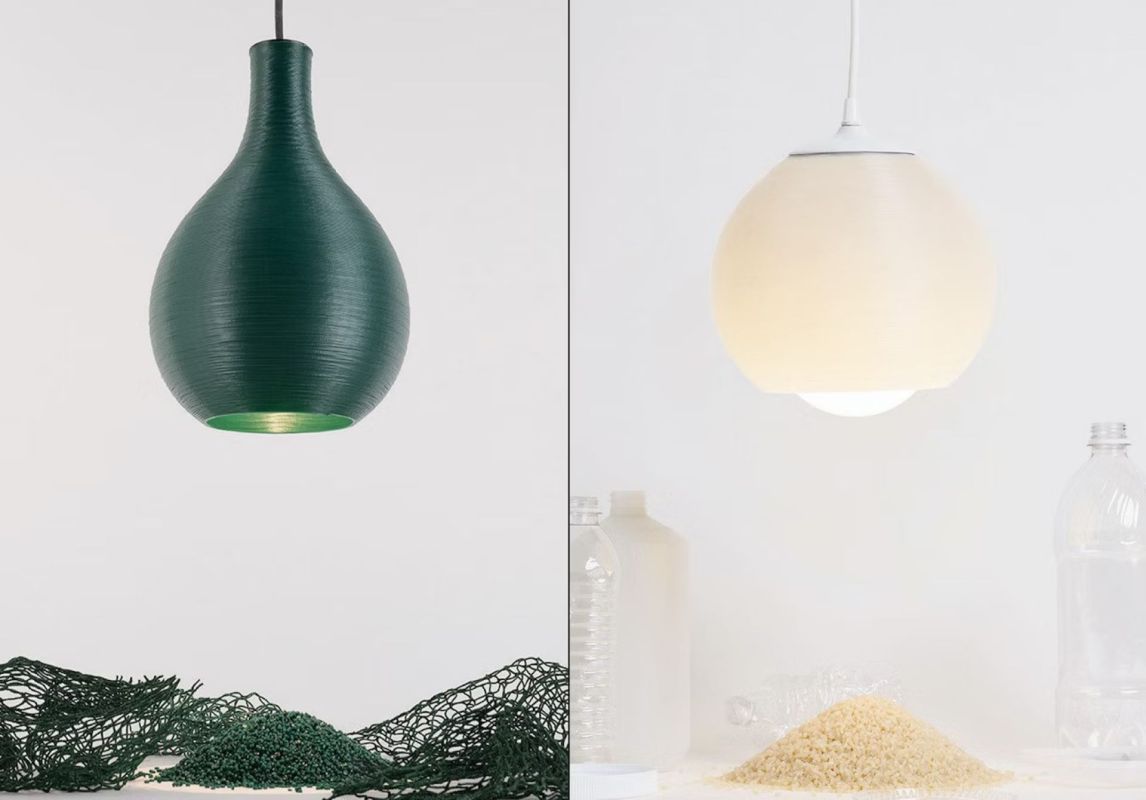Seattle-based light fixture company LightArt has released a new collection of fixtures made entirely from plastic waste and created using 3D printers.
Every year, nearly 14 million tons of plastic wind up in the ocean. In fact, 80% of ocean debris is plastic. That plastic poses risks to marine animals who might ingest or become tangled up in it. Plus, plastic emits polluting gases while it decomposes.
The ocean is traditionally good at capturing and storing carbon, one of the toxic gases most responsible for Earth's rising temperatures. However, some experts say that plastic in the ocean reduces the water's ability to do this.
Through its new collection, the Ocean Coil Collection, LightArt is playing a part in finding a solution to all of that plastic waste in the water. It partnered with Oceanworks, a company dedicated to collecting plastic waste and turning it into recycled products. For this particular project, the plastic comes from mismanaged waste collected within 31 miles of the Honduras coastline. LightArt is then using proprietary technology to turn that plastic into pellets that are fed into 3D printers to create beautiful light fixtures with hues of blue and green.
The Ocean Coil Collection, released in April 2023, adds onto a preexisting project called the Coil Collection, originally released in 2020 after roughly two years of development. The Coil Collection relied on recycled waste the company produced internally; using ocean plastic is a new method specific to the Ocean Coil Collection.
What's also new for this collection is a beautiful color that LightArt created by combining two types of plastic. It's called Marina and resembles sea glass. The ocean collection was inspired by sea foam and sea grass, and the pieces look like hand-spun pottery creations. Both collections recently received Declare Label certification, allowing them to be used in more commercial applications.
"Utilizing recycled materials in 3D printing technology is new for lighting manufacturing, especially at a mass scale," the company said, per Inhabitat. "Our team recognized that material types change how products are made, and introducing a new material like Marina required this level of reengineering."
Plastic production and waste are two leading causes in Earth's rising temperatures. The manufacturing of plastic releases toxic gases into the air, and as mentioned before, its decomposition causes the same problem. Experts believe the plastic industry will release 1.34 billion tons of toxic gases annually by 2030.
LightArt is fighting the plastic pollution issue on two fronts: It does not require the production of any new plastics to make its product, and it's cleaning up some of the plastic waste made by other manufacturers.
Join our free newsletter for weekly updates on the coolest innovations improving our lives and saving our planet.









